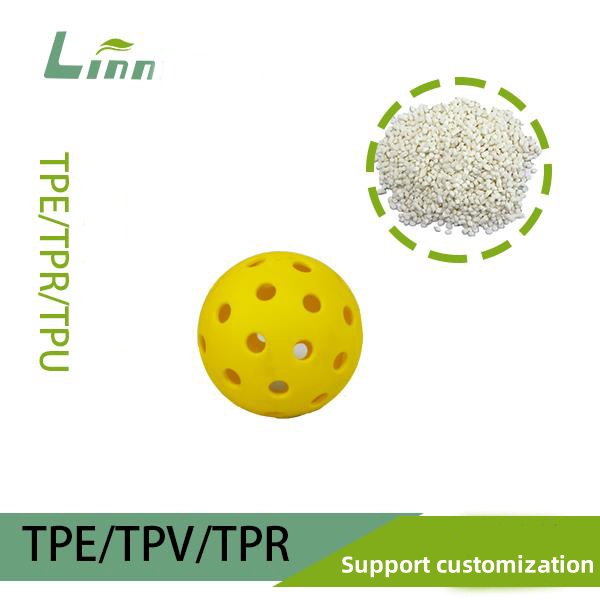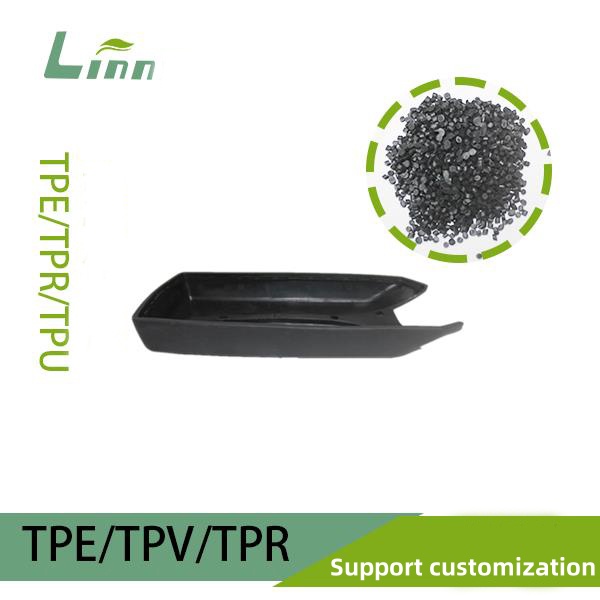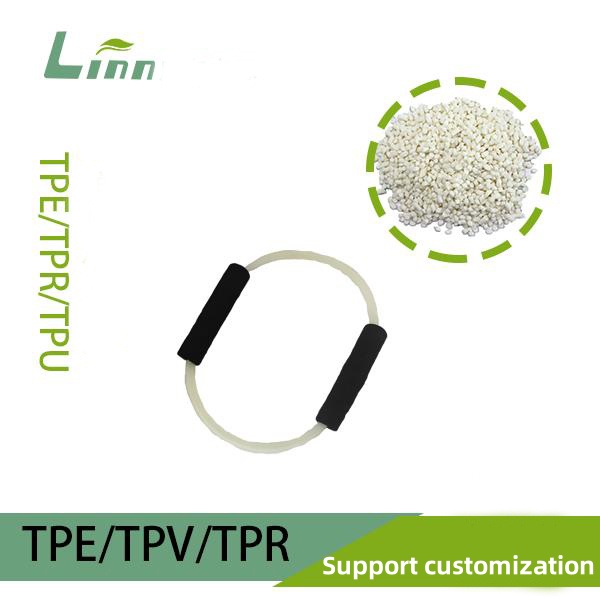A few years back, I was consulting for a small factory producing shoe soles, and the owner asked me if they could blend TPR with PP to cut costs while maintaining flexibility. I remember pausing, thinking about the chemistry and processing challenges involved. It wasn’t a simple yes-or-no answer—mixing polymers like TPR and PP is a bit like trying to blend oil and water. They don’t naturally get along, but with the right approach, you can make it work. That experience inspired me to dig deeper into this topic, and today, I’m excited to break it down for you in a way that’s clear, practical, and grounded in real-world applications.
Understanding TPR and PP: The Basics
Before we dive into whether TPR and PP can be mixed, let’s get a handle on what these materials are.
TPR (Thermoplastic Rubber): TPR is a versatile material that combines the elasticity of rubber with the processability of plastic. It’s widely used in shoe soles, gaskets, and flexible components because it’s lightweight, durable, and moldable. TPR is typically a blend of a polymer (like styrene-butadiene-styrene, SBS) and plasticizers, with hardness ranging from Shore A 20 to 90.
PP (Polypropylene): PP is a thermoplastic polymer known for its rigidity, chemical resistance, and low cost. It’s used in everything from packaging to automotive parts. PP is a semi-crystalline material, which makes it stiffer and less flexible than TPR.
I learned early in my career that TPR’s flexibility and PP’s rigidity make them seem like opposites. So, mixing them sounds counterintuitive—why combine a soft, rubbery material with a stiff plastic? The answer lies in achieving a balance of properties, like cost savings, improved strength, or specific performance traits.

Why Would You Want to Mix TPR and PP?
In my time working with manufacturers, I’ve seen companies explore blending TPR and PP for several reasons:
Cost Reduction: PP is generally cheaper than TPR, so blending them can lower material costs.
Enhanced Properties: Combining TPR’s flexibility with PP’s strength could create a material with unique characteristics, like a shoe sole that’s both durable and slightly flexible.
Sustainability: Using recycled PP or TPR in blends can reduce waste and promote eco-friendly manufacturing.
But here’s the catch: TPR and PP don’t naturally mix well. Let’s explore why and how to overcome this challenge.
The Science of Mixing TPR and PP
1. Polymer Compatibility: A Key Challenge
TPR and PP have different molecular structures. TPR is typically an amorphous, elastomeric material, while PP is semi-crystalline. This difference makes them immiscible, meaning they don’t blend seamlessly at the molecular level. When you try to mix them, you might end up with a material that separates into phases, like oil and water, leading to poor mechanical properties.
I recall a project where a client tried blending TPR and PP without proper preparation. The result was a brittle, uneven material that cracked under stress. This taught me that compatibility is the biggest hurdle when mixing these two.
2. Role of Compatibilizers
To make TPR and PP play nice, you need a compatibilizer—a substance that acts like a bridge between the two polymers. Common compatibilizers include:
Maleic Anhydride-Grafted Polypropylene (PP-g-MAH): This modifies PP to improve its bonding with TPR.
Styrene-Ethylene-Butylene-Styrene (SEBS): Often used in TPR formulations, SEBS can enhance compatibility with PP.
In one factory I worked with, adding PP-g-MAH to a TPR-PP blend improved the material’s tensile strength by nearly 20%. Compatibilizers help create a more uniform blend, reducing phase separation and improving performance.

3. Processing Conditions
Mixing TPR and PP requires precise control over temperature, shear rate, and mixing time. TPR typically melts at 160-200°C, while PP melts at 160-240°C. These overlapping ranges make blending possible, but you need to optimize the process to avoid degrading either material.
I once observed a compounding process where the team used a twin-screw extruder to blend TPR and PP. They carefully adjusted the temperature profile (around 180-200°C) and added a compatibilizer, resulting in a smooth, usable blend. This showed me that processing equipment and parameters are critical for success.
Practical Applications of TPR-PP Blends
So, where are TPR-PP blends actually used? Based on my experience, here are some common applications:
Shoe Soles: Blending TPR with PP can create soles that are cost-effective yet retain some flexibility, ideal for budget-friendly casual shoes.
Automotive Parts: TPR-PP blends are used in components like interior trim, where a balance of rigidity and flexibility is needed.
Consumer Goods: Items like tool grips or packaging materials can benefit from the durability of PP and the soft touch of TPR.
Comparison of TPR, PP, and Their Blend
To give you a clearer picture, here’s a table comparing TPR, PP, and a typical TPR-PP blend:
|
Material |
Hardness (Shore A) |
Key Properties |
Common Applications |
|---|---|---|---|
|
TPR |
20-90 |
Flexible, elastic, lightweight |
Shoe soles, gaskets, toys |
|
PP |
70-90 (Shore D) |
Rigid, chemical-resistant, low-cost |
Packaging, automotive parts |
|
TPR-PP Blend |
50-80 |
Balanced flexibility and strength |
Budget shoe soles, tool grips |
This table shows that a TPR-PP blend can offer a middle ground, combining some of TPR’s flexibility with PP’s strength and affordability.
Challenges and Limitations of Mixing TPR and PP
While mixing TPR and PP is possible, it’s not without challenges. Here’s what I’ve seen go wrong and how to address it:
1. Phase Separation
Without a compatibilizer, TPR and PP can separate into distinct phases, leading to a weak, inconsistent material. I’ve seen this in poorly blended samples that looked speckled and failed under stress. Solution: Use a compatibilizer like PP-g-MAH or SEBS, and ensure thorough mixing with high-shear equipment.
2. Reduced Mechanical Properties
Blending can sometimes compromise TPR’s elasticity or PP’s strength. In one case, a client’s TPR-PP blend was too stiff for their shoe sole application. Solution: Adjust the TPR-to-PP ratio (e.g., 70:30 or 50:50) and test the blend’s properties to find the right balance.

3. Processing Costs
Adding compatibilizers and using specialized equipment like twin-screw extruders can increase costs. I’ve worked with small factories that hesitated to invest in these, but the improved material quality often justifies the expense. Solution: Start with small-scale trials to optimize the process before scaling up.
How to Successfully Mix TPR and PP: Practical Tips
Based on my years in the industry, here are my top tips for blending TPR and PP effectively:
1. Choose the Right Compatibilizer
Select a compatibilizer suited to your application. For example, PP-g-MAH is excellent for improving adhesion in TPR-PP blends. Consult with material suppliers to find the best option.
2. Optimize the Blend Ratio
The TPR-to-PP ratio depends on your desired properties. For flexible applications like shoe soles, a 70:30 TPR-to-PP ratio works well. For stiffer components, try 50:50 or 30:70. Test different ratios to find the sweet spot.
3. Use High-Quality Equipment
A twin-screw extruder is ideal for blending TPR and PP, as it provides high shear and uniform mixing. Ensure the temperature is set within 180-200°C to avoid degrading either polymer.
4. Test the Blend
Before full-scale production, conduct mechanical testing (e.g., tensile strength, elongation, and hardness) to ensure the blend meets your requirements. I’ve seen factories skip this step and end up with defective products, so don’t cut corners here.
5. Consider Additives
Additives like fillers (e.g., calcium carbonate) or plasticizers can fine-tune the blend’s properties. For example, adding a small amount of plasticizer can enhance flexibility without sacrificing strength.
Industry Trends and Insights
The polymer industry is constantly evolving, and TPR-PP blends are gaining attention for their versatility. According to a report by Grand View Research, the global thermoplastic elastomer market, which includes TPR, was valued at $26.9 billion in 2023 and is expected to grow steadily. Blending TPR with cost-effective materials like PP is a trend driven by the need for sustainable, affordable materials.
In my work, I’ve noticed more companies experimenting with recycled PP in TPR blends to reduce environmental impact. This aligns with global sustainability goals, as outlined in reports like the Ellen MacArthur Foundation’s Circular Economy initiatives. However, recycled PP can introduce variability, so rigorous testing is essential.

My Experience with TPR-PP Blends
Let me share a story from my career. A few years ago, I worked with a shoe manufacturer looking to reduce costs on their TPR soles. They wanted to incorporate PP to lower expenses but were worried about losing flexibility. We ran several trials, starting with a 60:40 TPR-to-PP blend and adding PP-g-MAH as a compatibilizer. After tweaking the extruder settings and testing the blend’s hardness and tensile strength, we created a sole that was 15% cheaper yet still flexible enough for casual shoes. The client was thrilled, and it reinforced my belief that with the right approach, TPR and PP can be a winning combination.
Conclusion: Yes, TPR and PP Can Be Mixed—With Care
To wrap things up, TPR and PP can indeed be mixed, but it’s not a straightforward process. Their immiscibility requires compatibilizers, precise processing, and thorough testing to achieve a functional blend. Whether you’re aiming to cut costs, enhance properties, or explore sustainable options, a TPR-PP blend can be a viable solution if done right.
As someone who’s navigated the complexities of polymer blending, I encourage anyone considering this to start with small-scale experiments, invest in quality compatibilizers, and optimize processing conditions. If you’re a manufacturer or designer curious about TPR-PP blends, I hope this guide gives you the clarity and confidence to move forward. Got more questions? I’m all ears—let’s dive deeper into the world of materials!
FAQs
Q1: Is it cost-effective to mix TPR with PP?
A: Yes, blending TPR with PP can reduce material costs, as PP is generally cheaper. However, adding compatibilizers and specialized equipment may increase processing costs, so weigh the trade-offs.
Q2: Can TPR-PP blends be used for high-performance applications?
A: For high-performance applications like athletic shoes, TPR-PP blends may not be ideal due to potential compromises in elasticity or strength. They’re better suited for casual or low-stress applications.
Q3: Do TPR-PP blends require special equipment?
A: Yes, a twin-screw extruder is recommended for uniform mixing. Standard single-screw extruders may not provide enough shear to blend TPR and PP effectively.
Q4: Are TPR-PP blends environmentally friendly?
A: They can be, especially if using recycled PP. However, the environmental impact depends on the sourcing of materials and the energy used in processing.





